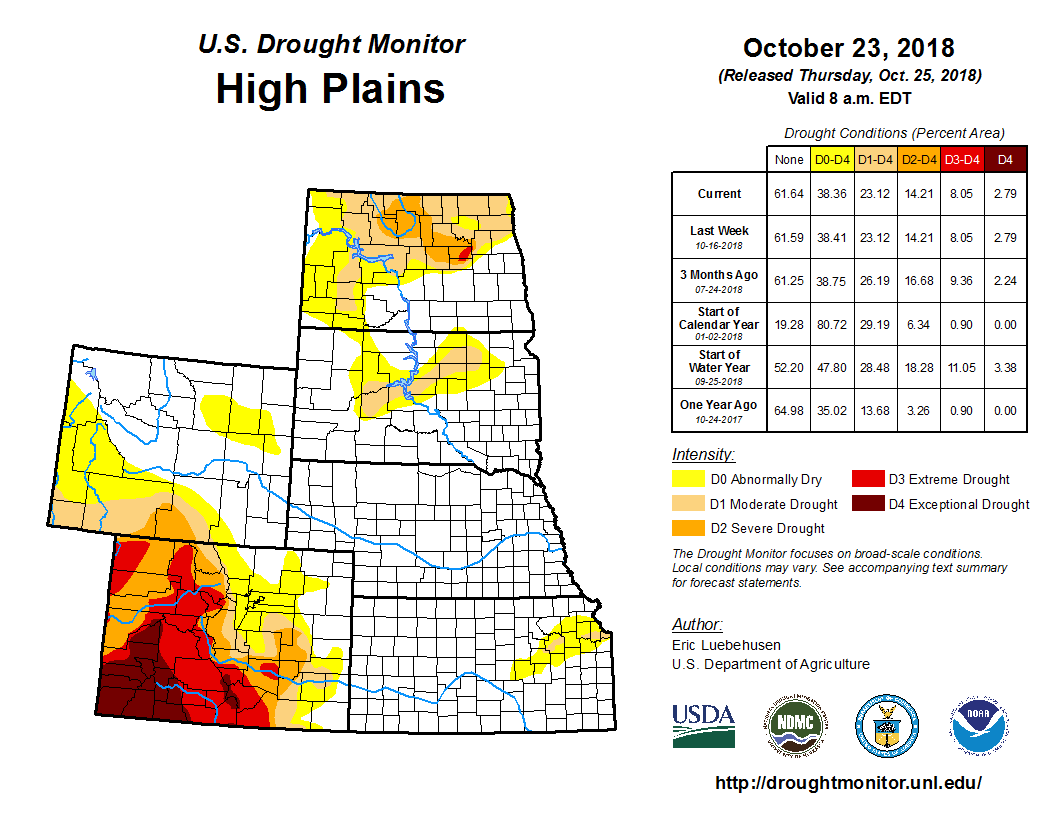According to the U.S. Drought Monitor for Oct. 23 released Oct. 25, outside of additional heavy rain across the south central United States, conditions were generally quiet across the nation. The break from the recent active weather pattern led to a quiet week in the U.S. Drought Monitor, with changes mostly confined to the South. While lingering wetness further reduced or eliminated drought from the Four Corners into Texas, short-term dryness was developing over parts of the Southeast. Note: the weekly drought analysis incorporates rain that has fallen through 12z Tuesday (8 a.m., EDT); any precipitation that falls after the data cutoff will be included in the following week’s assessment. Consequently, the heavy rain—associated in part with the remnants of Eastern Pacific Hurricane Willa—that has impacted (or will impact) much of the southern and eastern U.S. through the weekend will be accounted for next week.
After recent improvements to the High Plains region’s lingering drought areas, conditions were unchanged during the past week. Mostly dry weather prevailed, with temperatures averaging up to 5 degrees F above normal on the northern Plains. Across the region, recent rain and snow have helped to recharge water reserves and soil moisture while aiding pasture recovery and improving prospects for winter wheat establishment. However, significant longer-term moisture shortages linger in the Moderate to Extreme Drought areas (D1-D3), with precipitation over the past 365 days totaling locally less than 60 percent of normal.
While much of the Midwest remained free of drought, rain in southern portions of the region eased lingering dryness. In particular, rain totaling locally more than an inch—on top of a wet October to date—led to the removal of Moderate Drought (D1) in southwestern Missouri. The rest of the Midwestern Abnormal Dryness (D0) and D1 areas were dry but chilly, with temperatures averaging up to 10°F below normal. While the recent dry weather has begun to raise some concerns over short-term moisture deficits, the drier weather has aided corn and soybean harvest efforts overall.




